Many daches sit on their sections of flowers. They perfectly decorate any flowerbed, filling everything around with bright colors. Some of the most popular colors for giving are considered phloxes. To date, there are many types of these plants. And even within its species, they are diverse and not similar to each other. In different climates, the appearance of plants is different. So, for example, at an altitude of 4 km of Floxes of low-spirits and moughty. The stems of these plants are branched and covered by evergreen leaves. In this case, in such conditions, they reach up to 250 mm. In more favorable conditions, phlox grows up to 1.8 meters. We will tell about the methodology of their cultivation further.
Flox: Description
Depending on the species affiliation, plants are starting at different times. In particular, there are varieties blooming in spring, summer or in the summer-autumn period. The diameter of colors can vary from 20 to 40 mm. At the same time, in each inflorescence there may be up to 80 flowers. Each of them has five petals and stamens, as well as one pestle. Leaflets are similar to different location. So, in popular floccoxes, they can be oval, all-round or elongated. Most of the famous varieties of phlox are perennial. The exception is only Flox Drummond.
Types of Floxes
The well-known types of these cultures can be divided into four groups.
- The first of them includes bush tall varieties whose flowering occurs in the summer and in September. This group, in particular, belongs to such varieties like Flox Bakery, Flox Spotted and Flox Smooth. These varieties of plants can grow up to 170 cm.
- The second group includes bush grades that bloom in the second half of spring and in July. This group, in particular, includes the PHLOX Amoena varieties, phlox ovate and phlox moisture. In the height of the bushes of these varieties can reach only 70 cm.
- The third group includes a transition variety, i.e. The group has both bush and sharpening varieties. Their bloom occurs in the second half of spring and in the first half of summer. In particular, this group includes such types - phlox consisting by Canadian and phlox creep creep. In height, they can reach only 25-30 cm.
- The fourth group includes raising and sharpening varieties of phloxes. For example, Phlox Nivalis, Phlox Douglas and Flox Shiloid. Their bloom occurs in the spring or in the first half of summer. In height, they grow only by 10-15 cm.
Floxes Perennial: landing
Methods of breeding
Most often, cultural data is multiplied:
- stalling
- hassle
- dividing bush.
Nevertheless, some flowerflowers grow floccals from seeds. Seeds of plants collected on the afternoon in the fall, it is best to sow in the soil at the end of autumn or at the beginning of winter. Under the perennial phlox, it is desirable to choose a plot on which they can calmly exist for several years. If the snow has already managed, the one that lies in the garden, should be removed, and scatter the seeds with a step of 40-50 mm on the freeze ground. Then they need to be sprinkled with a small layer of land, but to cover with snow from above.
So that the land is not cold and frozen, it is advisable to prepare it in advance. Seeds that are planted at this time have a germination of about 70%. Shoots that will seek early spring, it is advisable to dive. It must be done after at least a pair of strong leaves will appear. The seedlings of Floxes should be planted in the last time. It should be noted that with the help of seeds, it is most often multiple plant grade breeding. In the spring, the garden is preparing, on it, with a step of 30-40 mm, seeds are crumbled, and then they are poured with a sprayer, after which they are covered with polyethylene. Earth is desirable not to sprinkle, but every day the film follows a briefly lifting and shaking off the accumulated moisture, so that the seeds can get enough air. When the seedlings proceed, polyethylene can be removed.
Reproduction of phloxes division
For the normal development of phlox, the procedure for dividing the bush is mandatory. It is recommended to be held every 6-7 years. It is allowed to perform it earlier, every 3-5 years. The division can be carried out almost at any time of the year, except for winter. For this, the bush carefully retrieves and cuts the existing shoots by 11-12 cm. Then they take a sharp knife and is cut with it to separate parts, each of which should contain 2-5 renewal knelts.
The transplant is carried out in the pits that must be prepared in advance. Before landing, the soil must have time to settle. For the falling of phloxes in the spring, the hole should be prepared in the fall, and for the landing in the summer or autumn - at least a couple of weeks before the event. There should be a sufficient distance between the pits. So, for tall varieties, it should be at least 60 mm, and for other varieties, the gap can be done less.
The compost in the amount of floor of the bucket and the necessary fertilizers are poured into the finished pits. As an additional feeding, ordinary ash is well suited. If on the area of \u200b\u200bacidic soil, then you need to add to the landing of the phloxes at least one glasses of lime. For fertilizers not caused roots burns, they should be well mixed with the soil. After making feeding, the fumes are filled with water, and then separated shoots are planted in them. They should be swept so that the renewal kidney is covered at least 30 mm, but not more than 40 mm. After that, the place is tampled that you need to do before and after plugging the compost layer.
Then the layer of mulch is poured on top of 100 mm thick. Thanks to the mulching, separated stems are preserved. In the autumn reproduction, phlox should have time to be "refined" before the onset of cold weather.
Reproduction with green cuttings
The harvesting of green cuttings begin when the plant reaches a height of 15 cm. If this is not on time, the prepared cuttings may not take care at all. In the workpiece, you need to cut off correctly: on the parent plant should be left at least two kidneys, both of them should be well developed. The cuttings themselves should turn out in length about 60-100 mm.
So that fresh cuttings are better rooted, they should be placed in water tank, but not more than an hour. Immediately before planting, leaflets are shortened to half, and a cut is made under the kidney. This concerns all the leaves except the lower - they need to be removed from the cutter completely. Under the influence of sunlight, uncompaired cuttings can turn. So that this does not happen, it is desirable to work in a room or in the shade. Finished cuttings are planted into the soil. It should be a place in the shade or in a greenhouse. So that they get better before, after planting, they are recommended to cover the layer of wet paper. Attach them enough to the depth of only 10-15 mm. In about a couple of weeks, the cuttings should be rooted.
Flox Annual: landing with seedlings
Not all gardeners plant floast seeds. One of the alternative options is the sediment landing. To obtain seedlings annual plants usually sow in the first month of spring. In this case, the first shoots usually appear one week later. During the first 14 days after the appearance of germs, lights are needed, sufficient watering and moderate temperature. After these two weeks, the seedlings are picked and placed in a place protected from sunlight for several days (for example, be covered with opaque film or newspaper). If this is not done, the sprouts can get burns. Before boarding the open soil for seedlings, it is advisable to make mineral fertilizers. To obtain a lush bush, the stems should be slightly cut when 4-5 sheets will be on the shoot.
On the flowerbed seedlings landed in May. At the same time there should be at least 150 mm between seedlings. It should be known that phloxes are unpretentious plants that are resistant to cold and drought, however, they love sunlight, but do not tolerate the overheating of the root system. The most beautiful phlox turns out when they grow in a half. When they planted on solar pools, they quickly burn out. Therefore, it is desirable that the plants for the day are in a half-way, where they can save the brightness of the color.
Floxes are recommended to plant on the elevated places, away from trees and bushes with massive roots. As for the soil, then in its composition for the phlox annuals should be more humus. Heavy soils without draining negatively affect the development of this culture. In addition, the phloxes are poorly transferred to the acidified areas, and if the soil at the cottage is exactly this, then it is recommended to add lime to it. For phlox, it is desirable that the soil consisted of sand without clay impurities. If the land on the site is heavy loam, it will need to add sand, peat and organic feeding. For planting seedlings, a shameless fossa is digging in which it is pre-recommended to add compost or biohumus. When landing the roots of the seedlings of phloals should be accurately straightened.
Floxes Perennial: Care
Floxal care includes fertilizers, timely watering and preparation for wintering. In order for the phlox to have a perfect appearance, they must be regularly necessary for the entire growth period to feed fertilizers. It is necessary to begin to do since the start of the activity of the first kidney, and then come when the leaflets are completely squealing. As for watering, it should provide constant soil humidity. Therefore, it should be carried out regularly. It is also necessary to loosen the surface of the soil.
Perennial phlox needs to prepare for winter before the onset of cold weather. If the snow has not yet fallen, then at a temperature of -12-14 degrees during a couple of weeks without insulation, growth kidneys will be freezed. At temperature -20-25 without insulation, the death of rhizomes occurs. If there is a snow cover with a thickness of 50-60 cm, phlox will be able to successfully overweight even if the temperature on the street reaches -35 degrees.
Diseases and pests of phlox
Frequent pests of these crops are wires, inch people and naked slugs. In addition, harm may apply storm nematodes, paw-tones and slumbsy Pennitsa. If the plant is weakened due to the lack of moisture, it becomes vulnerable to the Tly.
Of the diseases of phlox, they are most often affected by septoriasis, phommomom and mildew. The latter is considered the most common, and it is he who strongest spoils the appearance of the colors. Therefore, on the pulmonary dew it is worth a little more details. The affected plant is covered with a dense white bloom. Usually alert progresses in the middle of the summer. The affected leaves are gradually twisted, fall and dry.
To combat pulmonary dew in the first manifestations of the disease, it is necessary to treat plants with a solution of soda calcined with soap. It needs to be done several times with a break about a week. To prepare a solution on one bucket of water takes 2 tbsp. soda, 50 gr. Soap. Instead, you can treat copper-soap solution. For its preparation on the water bucket take 200 grams. Soap and 20-35 gr. copper sulfate. After flowering in the fall of the plant, it should be briefly cropped and treated with the drugs described above again. As the prevention of pulse dew since the beginning of the summer, it is recommended to periodically spray with fungicidal preparations periodically, and in October, to process plants with a solution of copper mood or borobo liquid.

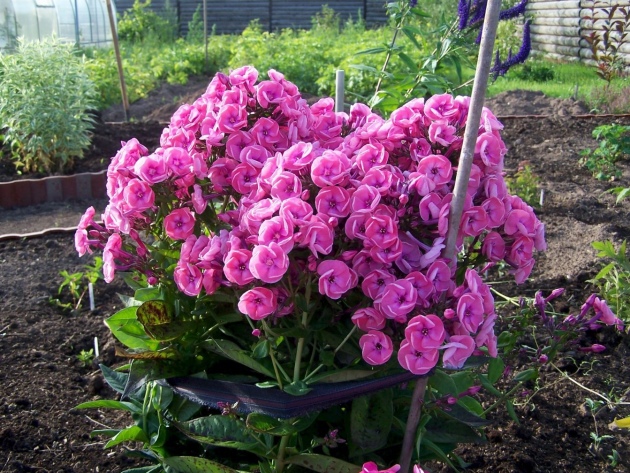
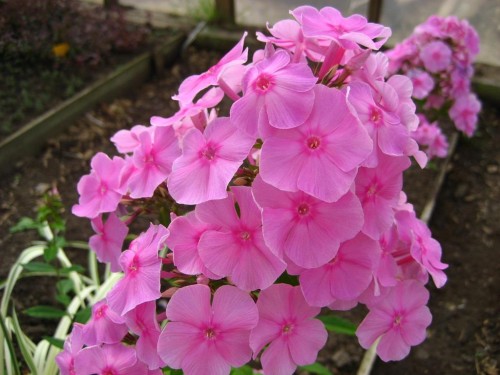
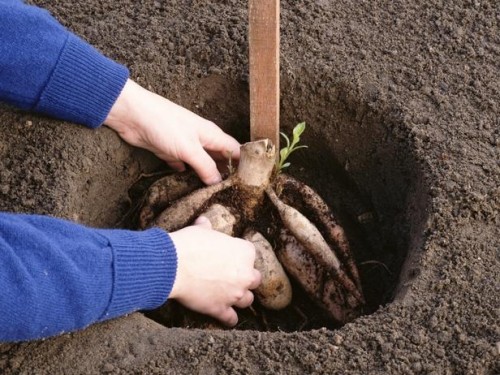
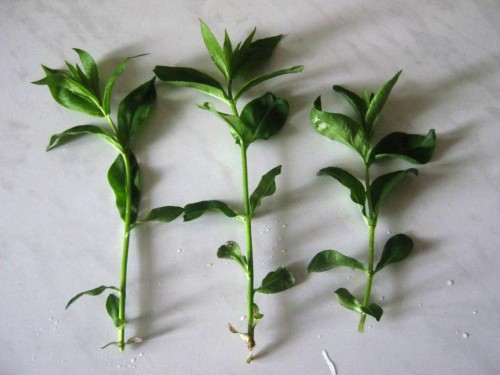
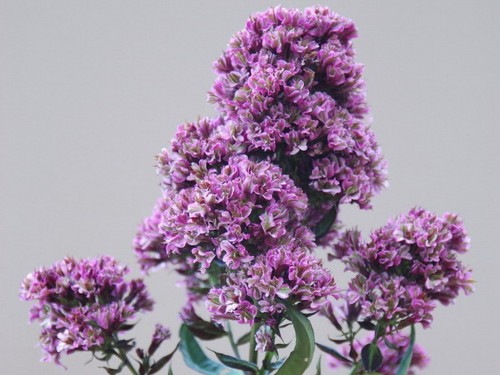
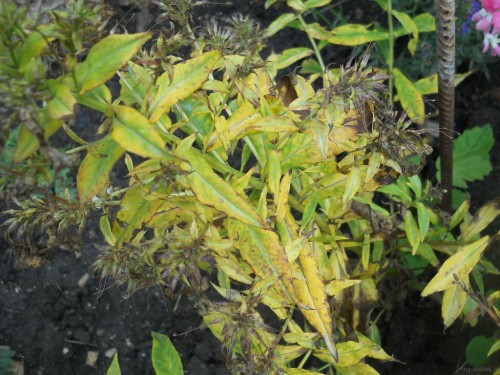
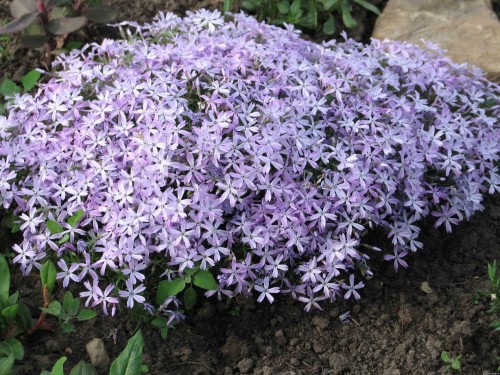
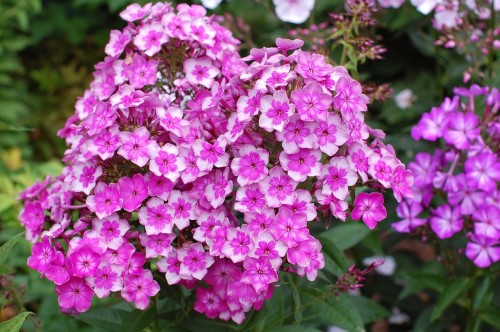

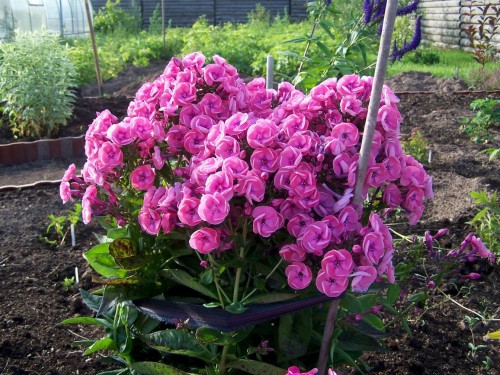












 Start a discussion ...
Start a discussion ...